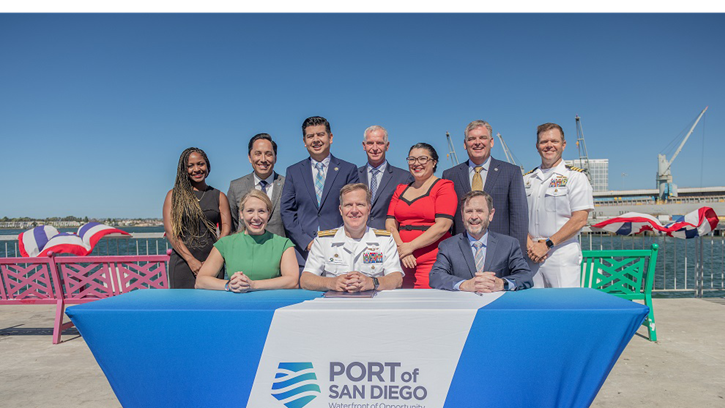
Port of San Diego signs pioneer agreement with U.S. Navy to advance electrification projects
To further reduce greenhouse gas emissions and improve air quality around the San Diego Bay, Navy Region Southwest and the Port of San Diego signed a first-of-its-kind partnership on September 20th that gives the U.S. Navy access to California’s Low Carbon Fuel Standard (LCFS) market. The groundbreaking federal/state initiative will provide millions of dollars to further electrification projects for both the naval base and the port.
LCFS is a cap-and-trade-like program that requires the producers of fossil fuels to either increase the use of plant-based carbon (such as ethanol or soybean oil) or buy credits to meet the requirement. The Navy will generate LCFS credits while its ships are plugged into shore power. One LCFS credit is equivalent to the reduction of one metric ton of carbon dioxide.
The Navy’s participation is the first such involvement by the Department of Defense in this type of carbon reduction effort. As the local participant in the state’s LCFS program managed by the California Air Resources Board (CARB), the Port of San Diego will register, generate, and sell the credits from Navy shore power and then utilize sale proceeds to provide Naval Base San Diego with energy and utility improvement projects.
By keeping a specified portion of the Navy’s LCFS revenues in exchange, the port will pay for personnel to manage the design and construction of Navy-identified projects at the naval base and in related port operations.
If the partnership being conducted as a pilot program through 2030 is successful, it could be duplicated between other U.S. ports and naval bases.
California was the first state to establish an LCFS program in 2012. In 2019, shore power became an eligible use, and the Port of San Diego was the first California port to enter the market.